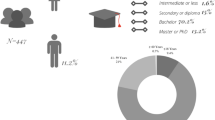Summary
Some people like to try cosmetics before purchasing them. With repeated use by different customers, however, the tester kits provided by many retail outlets can become potential vectors of microbial pathogens. A survey was conducted to assess the health risk from bacteria found on shared-use cosmetics. A total of 3027 shared-use cosmetic product samples were collected from 171 retail establishments throughout the contiguous United States. Eye, face and lip cosmetics were tested within situ nondestructive swabbing and the use of the Transette 3R Modified Amies Charcoal Culture and Transport System. Bacteria were isolated from about 50% of the items for all three categories. Semiquantitatively-estimated mean densities were 2288, 1685 and 1088 CFU g−1 for eye, face and lip products, respectively. Ranges for all categories were 0–155 CFU g−1. About 5% of the items had bacterial counts above 5000 CFU g−1 (eye products) or 10 000 CFU g−1 (other products). More than 60% of isolates were typical of microflora from human skin; the remainder were environmental microbes. About 60% of the isolates were Gram-positive cocci:Staphylococcus spp. (especiallyS. epidermidis) andMicrococcus spp. The Gram-negative pathogenPseudomonas aeruginosa constituted 0.07% of the isolates. The survey results suggest that the preservation systems of some of the cosmetics failed under excessive use (abuse), and indicated a potential for microbiological safety problems with shared-use consmetics.
Similar content being viewed by others
References
Dawson, N.L. and D.J. Reinhardt. 1981. Microbial flora of in-use, display eye shadow testers and bacterial challenges of unused eye shadows. Appl. Environ. Microbiol. 42: 297–302.
Hitchins, A.D., T.T. Tran and J.E. McCarron. 1992. Microbiological methods for cosmetics. In: FDA Bacteriological Analytical Manual, 7th edn, pp. 369–381, AOAC International, Arlington, VA.
Madden, J.M. 1984. Microbiological methods for cosmetics. In: Cosmetic and Drug Preservation: Principles and Practice (Kabara, J.J., ed.), pp. 573–603, Marcel Dekker, New York and Basel.
Mislivec, P.B., R. Bandler and G. Allen. 1993. Incidence of fungi in shared-use cosmetics. JAOAC Int. 76: 430–436.
Tran, T.T. and A.D. Hitchins. 1990. Microbiological survey of shared-use cosmetic test kits. Abstr. Annu. Mtg. Am. Soc. Microbiol. 90: 322.
Tran, T.T., A.D. Hitchins and S.W. Collier. 1990. Direct contact membrane method for evaluating preservative efficacy in solid cosmetics. Int. J. Cosmet. Sci. 12: 175–183.
Tran, T.T., F.J. Hurley, M. Shurbaji and L.B. Koopman. 1994. Adequacy of cosmetic preservation: chemical analysis, microbial challenge and in-use testing. Int. J. Cosmet. Sci. 16: 61–76.
Wilson, L.A. and D.G. Ahearn. 1977.Pseudomonas-induced corneal ulcers associated with contaminated eye mascaras. Am. J. Ophthamol. 84: 112–119.
Author information
Authors and Affiliations
Rights and permissions
About this article
Cite this article
Tran, T.T., Hitchins, A.D. Microbial survey of shared-use cosmetic test kits available to the public. Journal of Industrial Microbiology 13, 389–391 (1994). https://doi.org/10.1007/BF01577224
Received:
Accepted:
Issue Date:
DOI: https://doi.org/10.1007/BF01577224




